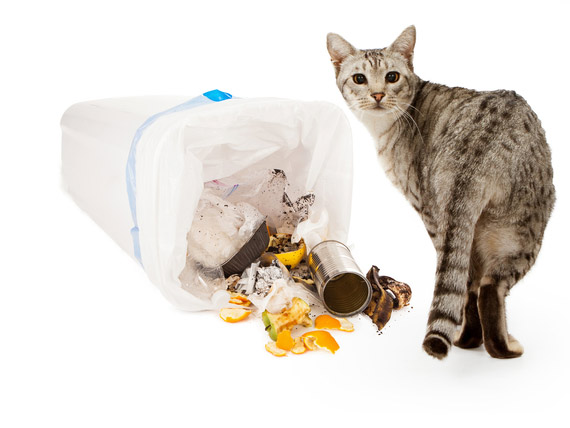
Coccidioidomycosis, an illness caused by the Coccidioides immitis fungus, comes from inhalation of the soil-borne fungus. The respiratory system is most affected, with the fungus spores beginning in the lungs as round spherules, living in a parasitic stage there until they grow large enough to rupture, releasing hundreds of endospores. They then begin a parasitic stage in the tissues, growing and rupturing, and then disseminating into the wider body perpetually. Endospores can also take a faster route through the body by way of the lymphatic and blood vessel systems, resulting in systemic infection – meaning the entire body will be affected. Full infection sets in around 7 - 20 days after exposure, though some animals can develop an immunity and never show any symptoms, especially younger animals. Animals that are susceptible to the infection can become ill from only a small amount of the coccidioides fungus; fewer than ten fungus spores are needed to cause the disorder.
This is an uncommon but frequently deadly disease that originates mainly in the arid, hot regions of the western and southwestern regions of the U.S., and in several Central and South American countries. This infection is also known as San Joaquin Valley Fever, California Fever, cocci, and desert fever. The suffix for this disease, mycosis, is the medical term used for any disorder caused by a fungus. Coccidioidomycosis affects many mammals, including dogs, cats, and humans. However, it is not communicable between animals or humans.
Symptoms can include:
This infection is less common in cats, and the spread of the infection tends to behave somewhat differently than with other animals. Cats typically do not show the same symptoms that dogs do, and may even remain asymptomatic until the infection has spread significantly. In cats, the deeper layers of skin tissue are more likely to be affected. Symptoms like masses, abscesses, and lesions with draining occur more often with cats.
C. immitis grows several inches deep in the upper layer of soil, where it can survive high temperatures and low moisture. The fungus returns to the surface after a period of rainfall, land construction, or crop harvest, where it forms spores that are released and spread by wind and dust storms. This fungus is found in the southwestern United States in Southern California, Arizona, southwest Texas, New Mexico, Nevada, and Utah, and in many countries in the Central and South Americas. After the rainy season, when there are dust storms, there is an increase in the number of cases.
Your veterinarian will perform a thorough physical exam on your pet, including a chemical blood profile, a complete blood count, and a urinalysis. You will need to give a thorough history of your pet's health, including a background history of symptoms, and possible incidents that might have precipitated this condition. The history you provide may give your veterinarian clues as to which organs are being affected secondarily.
Clinical signs, such as seizures, pain, and coughing should be treated. Symptoms may be relieved with steroids and cough suppressants. Until clinical signs begin to subside, physical activity should be restricted. This may be done with cage rest, or by setting aside a quiet, enclosed space for your cat to rest in. You will need to plan a high-quality diet to feed your cat during the recovery process to maintain body weight. If an organ is severely affected, surgical removal might be recommended. If the disease is widespread, aggressive anti-fungal therapy may be required for at least a year.
Your veterinarian will want to monitor blood antibody levels every three to four months, until they are in a range that can be considered normal. If your pet is not responding well to the therapy, a two to four hour post-pill drug level measurement test can determine how well the drug is being absorbed and give you and your veterinarian a better idea of what direction to go in.
Prevention: If you live in an area where this fungus is prevalent, stay in touch with your veterinarian, so that you will if the veterinarians in your area are seeing a lot of cases of coccidioidomycosis. When this is the case, it is wise to avoid high risk areas, particularly after the rainy season and during dust storms.
This is one of the most severe and life-threatening of the fungal diseases, and the prognosis for your pet is guarded to grave. Many animals will improve with oral anti-fungal medication; however, relapses are common, especially if therapy is not followed through to completion or is shortened. Recovery without treatment is not typical, but it is possible for an animal to develop an immunity to the infection and recover from it.
 Destructive Behavior in Cats
It is normal for cats to scratch things. They do
Destructive Behavior in Cats
It is normal for cats to scratch things. They do
 Pain from the Nervous System in Cats
Neuropathic Pain in Cats
An injury or disease rel
Pain from the Nervous System in Cats
Neuropathic Pain in Cats
An injury or disease rel
 Insufficient Urine Production in Cats
Oliguria and Anuria in Cats
Oliguria is the medic
Insufficient Urine Production in Cats
Oliguria and Anuria in Cats
Oliguria is the medic
 Aggression in Cats (Overview)
Cats are small, and often become the target of ot
Aggression in Cats (Overview)
Cats are small, and often become the target of ot
 How to Get Rid of Stray Cats and Kittens Under a Porch
How to Get Rid of Stray Cats and Kittens Under
How to Get Rid of Stray Cats and Kittens Under a Porch
How to Get Rid of Stray Cats and Kittens Under
Copyright © 2005-2016 Pet Information All Rights Reserved
Contact us: www162date@outlook.com